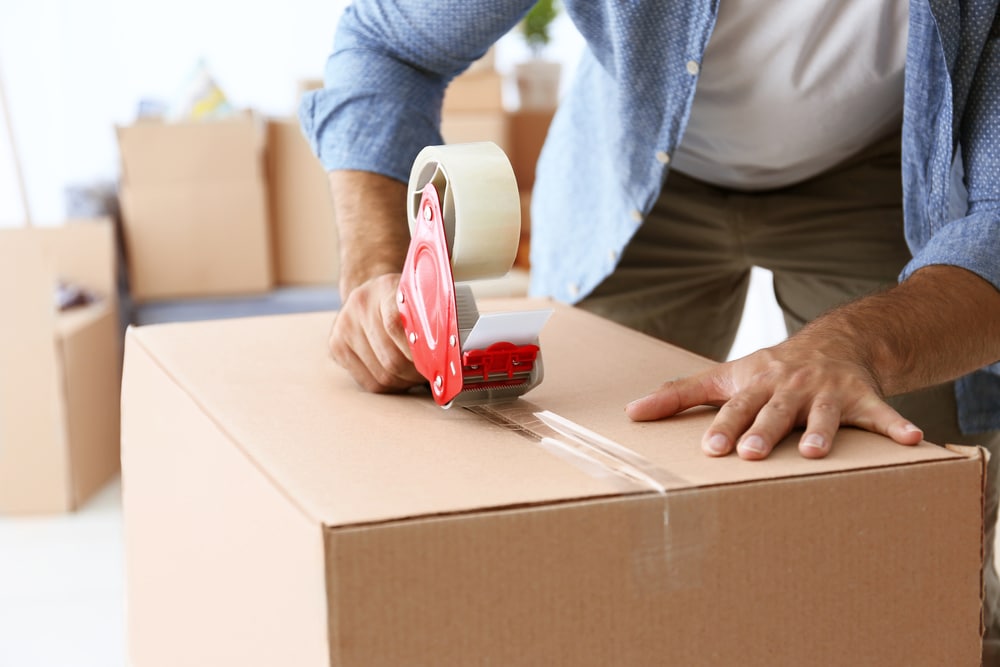Moving home can be an incredibly stressful experience. Your life gets packed into boxes, driven across town, and Moving home is often incredibly stressful.
However, with planning and organisation, you can make it easier.
This blog provides practical tips on how to achieve this.
Why is moving house so stressful?
Moving house is widely considered one of life’s most stressful events.
There are several reasons why this is so:
It’s a significant life change
Even when moving for positive reasons, it still means leaving your home.
You may leave behind your community, daily routines, and general familiarity with your surroundings.
There’s a lot to organise
Countless tasks are demanding your attention, including:
- Finding a new place
- Packing
- Hiring removal vans
- Redirecting your post
- Updating your address.
And more. It’s easy to feel overwhelmed.
(Read our moving house checklists to help prepare you before, during and after your move!)
It’s physically demanding
Packing, lifting, and unpacking takes time and energy.
It’s stressful
The weeks and months leading up to a move are stressful. The pressure, which may affect your sleep, mood, and general sense of well-being.
This can continue for a long time. House sales can still fall through after exchange.
And once you move, you might (on rare occasions) find that the seller hasn’t disclosed everything.
You’re on a tight schedule
You usually must vacate your old property and move into your new one within a day or two.
This condenses all the work into a short, stressful burst.
Knowing what makes moving stressful will help you manage it better. The key is organisation and preparation.
Get organised well in advance of moving day
Start decluttering as soon as you know you’re moving.
Sort unwanted items into charity donations, selling piles and rubbish.
This prevents leaving it all until the moving week when time is short.
Research removal firms and book one in
Get quotes from a few recommended companies.
Check their availability for your moving day and get booked in.
Notify utility companies, banks, etc., about your change of address
Give them the date you’re moving.
Plan a room-by-room packing schedule
Decide what you’ll pack when based on what you need day-to-day pre-move. Start packing non-essentials early.
Purchase moving supplies
This includes:
- Boxes
- Tape
- Markers
- Padding
Organising these ahead of time makes the moving process less daunting.
Ask family and friends to help
Don’t try to move house alone.
Call in favours from family and friends to share the workload. Many hands make light work, and it’s also great for morale.
Agree on specific tasks you’d like help with. Possibilities include:
- Packing awkward items like lamps, mirrors, etc.
- Loading the removal van.
- Cleaning the old or new property
- Repairs on the old property (make sure you know what not to fix, too)
- Moving with pets and children
- Making refreshments to keep energy levels up.
Schedule help requests well in advance so people can plan around them. Make it clear which date/time slots you need assistance with.
As thanks, provide plenty of drinks and snacks, and consider organising a pizza or takeaway for your moving team.
You may also want to arrange a rota for helpers.
Having set time slots for people to lend a hand prevents everyone from descending at once and getting underfoot.
Plus, it spreads the workload efficiently. Don’t be afraid to give people specific instructions, either.
Create a checklist of ‘things to do’ and inventory
Are stress levels rising as moving day approaches?
A detailed checklist keeps you on track. Create one covering everything from start to finish:
- Notify utility companies, banks, etc
- Arrange phone and broadband connection in the new home
- Confirm removal firm booking
- Buy packing supplies – boxes, markers, etc
- Pack room by room
- Arrange help from friends and family
- Confirm completion dates for old/new property
- Clean old property before leaving
- Defrost freezers/remove food
- Charge devices for moving day.
Also, create an inventory of items in each box as you pack. Number the boxes, then list the contents, such as:
- Box 1 – Kitchen items: Mugs, plates, and cutlery
- Box 2 – Bathroom: Towels and toiletries.
This prevents wasting time rummaging through boxes once moved. You can go straight to the correct labelled box.
Tick items off your master checklist as completed. Review it daily in the run-up to the move so things don’t get missed.
Use checklist/inventory phone apps, too. Search app stores for a ‘moving home checklist’ to find one suited to your needs.
Label your boxes clearly
Packing boxes provide temporary storage for moving day.
But this only works smoothly if boxes have evident labels about the contents.
As previously mentioned, number each box sequentially as you go. Have a marker pen handy so you can write directly onto boxes:
- Clear room name – for example, ‘Kitchen.’
- Special items inside if helpful
- Destination room in the new house – such as ‘Bedroom.’
Also, indicate any fragile or heavy boxes requiring extra care when loading/carrying.
Use a colour-coded labelling system if item name labels aren’t practical for directly onto boxes.
For example, use red stickers for the kitchen and blue stickers for the bathroom.
Labelling like this prevents boxes from getting muddled or ending up in the wrong room.
Timing buying your new house and moving out of your current one
Ideally, your move happens in a relay fashion.
You complete buying your new home a few days before vacating your old property.
This provides a valuable overlap period where you can move smaller items at leisure.
Once you get keys for the new property, take carloads of boxes across.
Move across what you’d prefer, not entrusting valuables or fragile items to the removal team.
This is much less stressful than frantically squeezing everything into 1-2 days with nowhere to stay in between.
Get professionals to help
While DIY moving with friends scratches the cost, consider getting professional help, too.
Their expertise helps on the day – making the process faster and less demanding.
Removal firms are an obvious option, taking heavy lifting off your plate. Just steer them in the right direction as they work.
Some even fully pack on your behalf – worth paying extra for.
A packing and unpacking service can bring peace of mind if the budget allows it.
They’ll provide boxes and then return to unpack them into the new property so items end up in the correct rooms and ready to use.
Other specialists can help, too – electricians can disconnect/reconnect appliances, or cleaners can prepare properties.


















